Best Time to Visit South Africa
South Africa can be broadly divided into two weather regions, the northern part of the country with wet summers and dry winters and the southern part of the country with dry summers and wet winters. For safaris, the dry winter months of the north are best and of course, for the Cape Town area, the most sought-after times are the dry summer months.
So when is the best time to visit South Africa? It depends on what you after, so we have split the country up into 4 regions – Cape Town, Kruger National Park, Kwazulu-Natal, The Garden Route and the Drakensberg, and discuss the weather & activities as best suited to certain months.
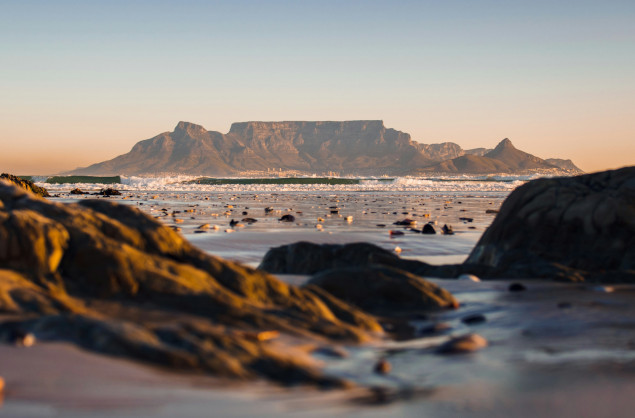
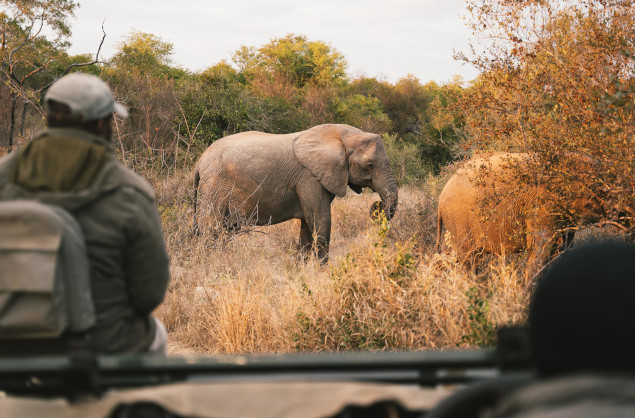
Cape Town and surrounding areas
Cape Town’s peak tourism season runs parallel with the dry summer months when temperatures range between 28 –29°C (82 – 84°F). Early sunrises and late sunsets, make for long daylight hours (13.5 – 14 hrs) that provide ample opportunity to spend time outdoors, allowing you to soak up the glorious views from the cable car on Table Mountain, or a lengthy lunch on a wine farm, on the outskirts of the city.
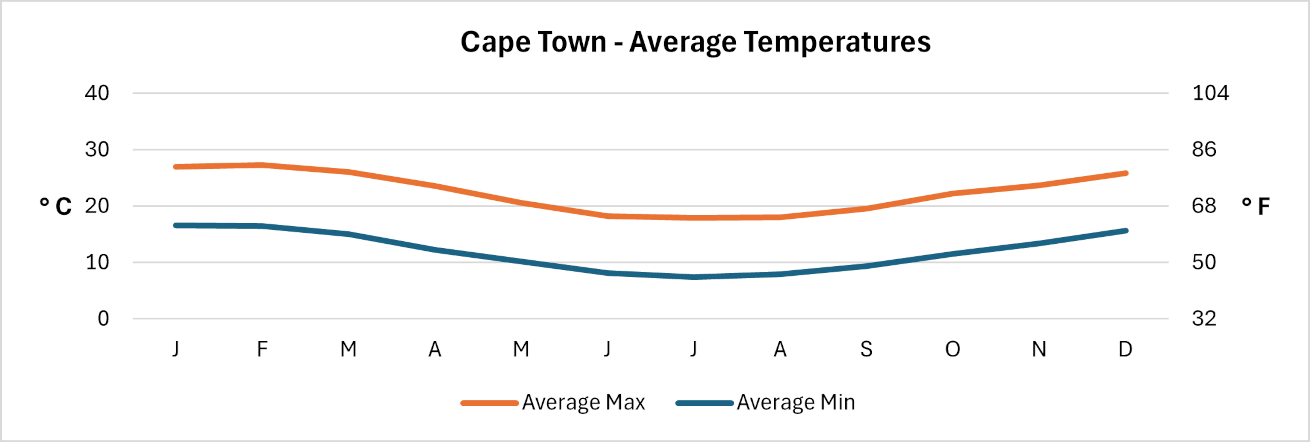
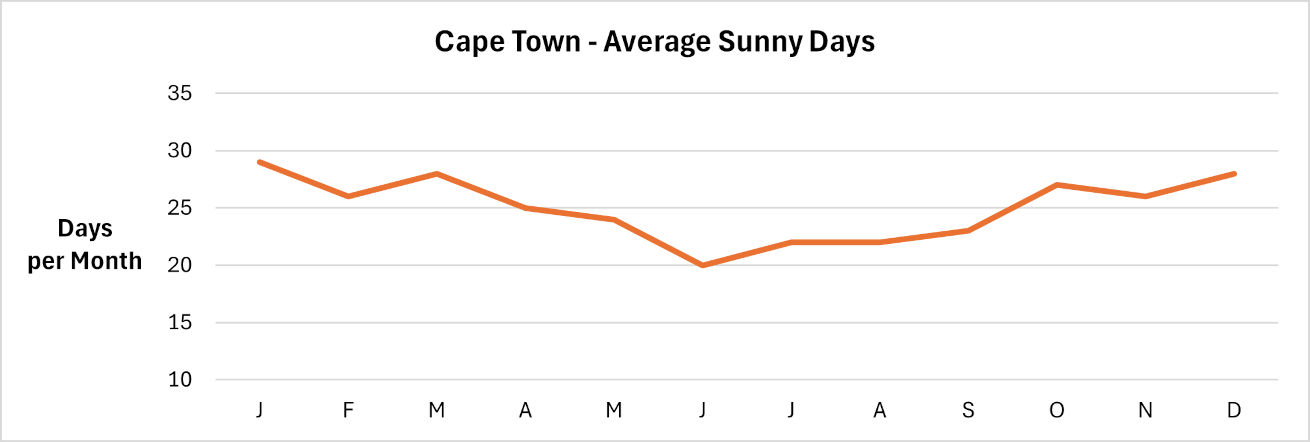
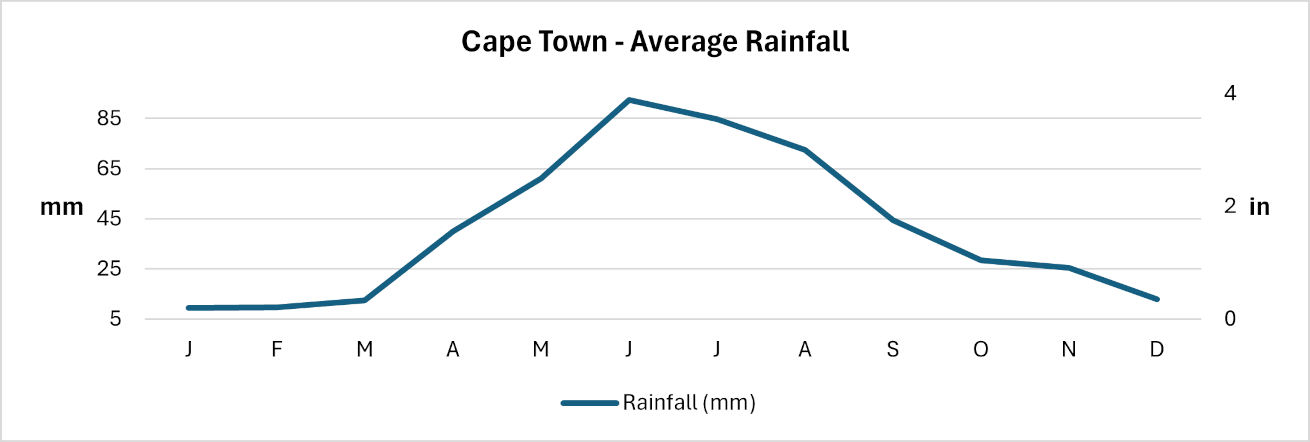
Nearly all the summer activities available in the Cape are open in the wetter winter months from June to August but are governed by the weather of the day. These months bring the rains in the form of intermittent cold fronts and temperatures that sit between 20 – 22°C (68 – 71°F), providing the perfect opening to enjoy the cosy atmosphere of a countryside restaurant with a fireplace.

Whale season in the Cape is from the end of July to October, when the gentle Southern Right whales arrive to mate & calve, and can be spotted swimming close to the shore at numerous locations along the Cape coast including the sea-side town of Hermanus. The Wildflower season runs from August to September, sometimes as early as July depending on the rains. The best time to head up Table Mountain is during March and April when the city is at its driest with the least amount of wind. A visit to the Cape Winelands can be done throughout the year with each season bringing its highlights – in the summer months many new wines are released, and in the winter months the scenery is stunning as this is the green season from the winter rains.
Kruger National Park
Arguably one of the most sought-after destinations in South Africa and it’s no surprise why.
The bushveld region of the Kruger National Park is one of the most beautiful attractions that South Africa has to offer. Situated in the northeastern section of the country, the Kruger is home to an abundance of plant and animal life and several major rivers, including the Sabie, Olifants and Limpopo Rivers.
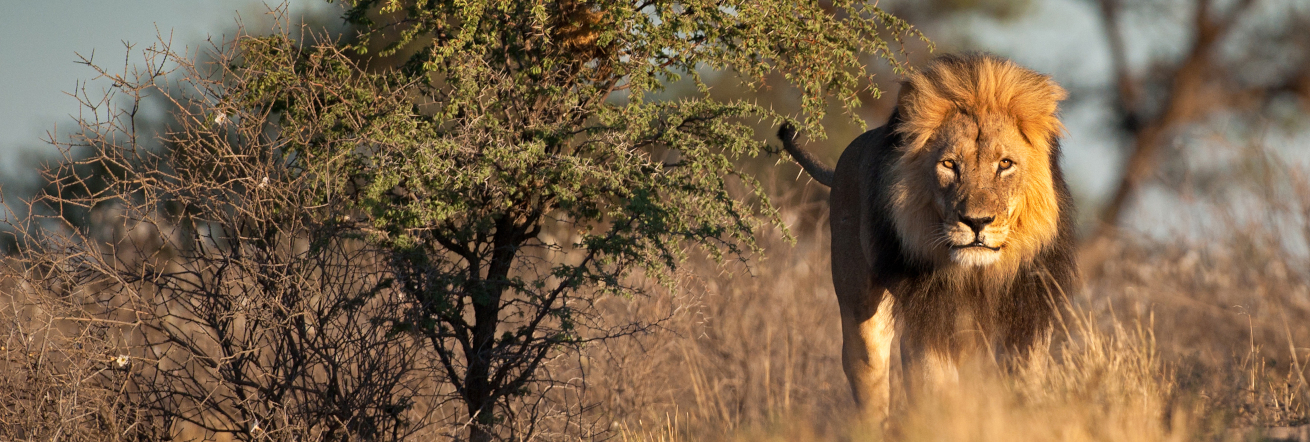
The best time to visit South Africa for a Kruger Park Safari, is during the dry winter months, as the vegetation begins to thin out, creating high visibility and ultimately, excellent game-viewing opportunities. Due to the lack of rainfall over the winter period, the surface water is limited, making animal movements more predictable and all the more easy to spot. Winter evenings in the Kruger are cool and crisp, while days are warm and pleasant as temperatures range between 26 – 29°C (78- 84°F). Safari lodges in the Kruger Park also offer a variety of specials during this time, adding to the area’s charm. Although summer in the Kruger brings with it sweltering temperatures, lush, green vegetation and higher rainfall, the visibility tends to be lower as animals and birds become more dispersed and the constant need to congregate around waterholes, begins to reduce.
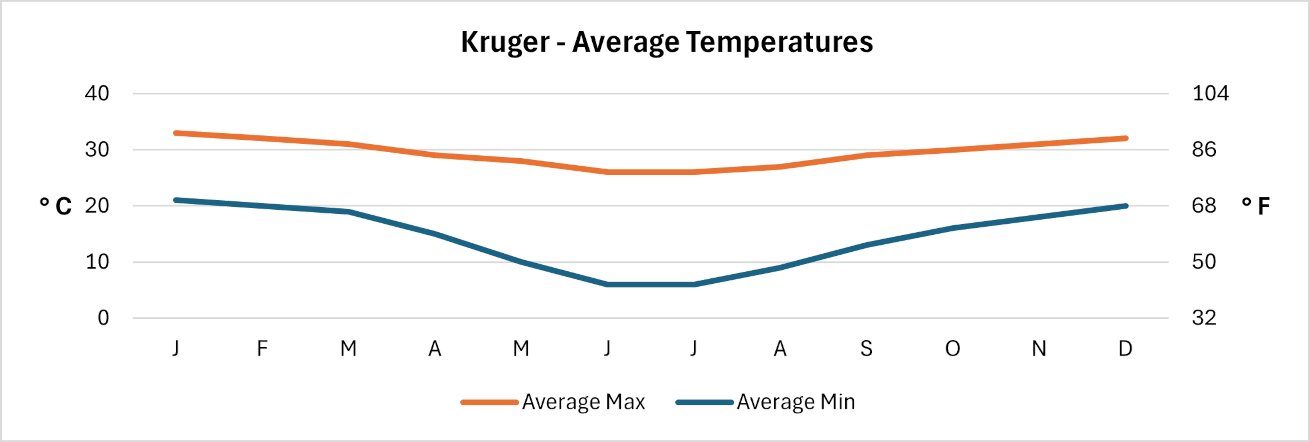
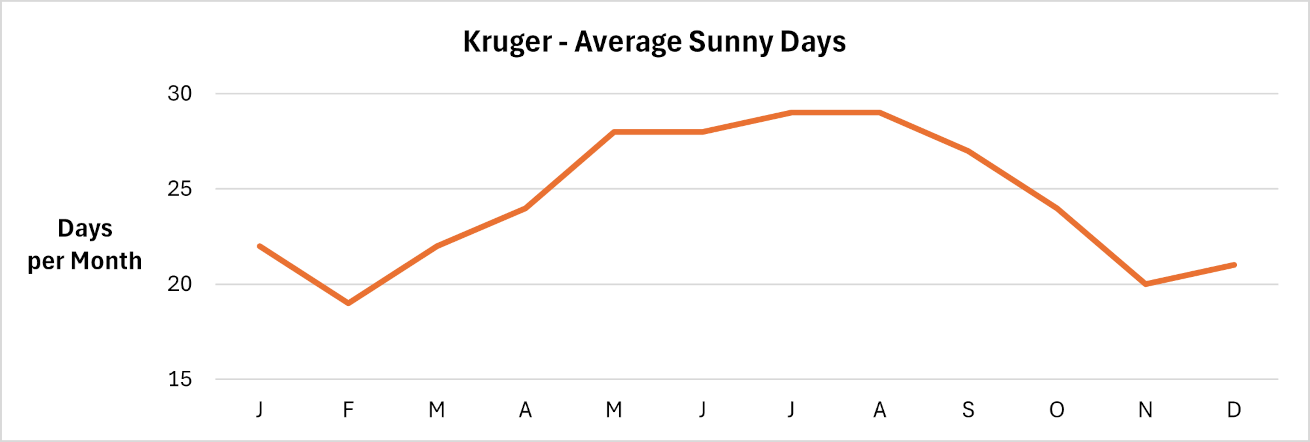
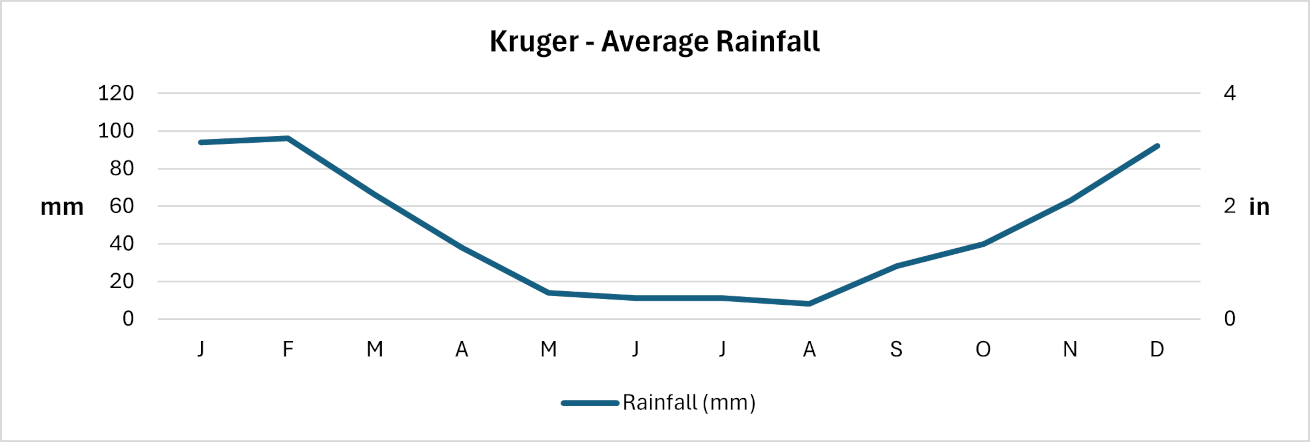
To get your fix of seeing some of Africa’s best predators, a visit to Kruger between July and October will not disappoint, due to the increased visibility and water limitations the likelihood of you spotting a predator-prey interaction is quite high. If you are more interested in seeing young animals such as antelope, then a visit between November and February is best as this is the calving season where most antelope drop their young during this time. Birding is also wonderful during the summer months as there is plenty of breeding going on.
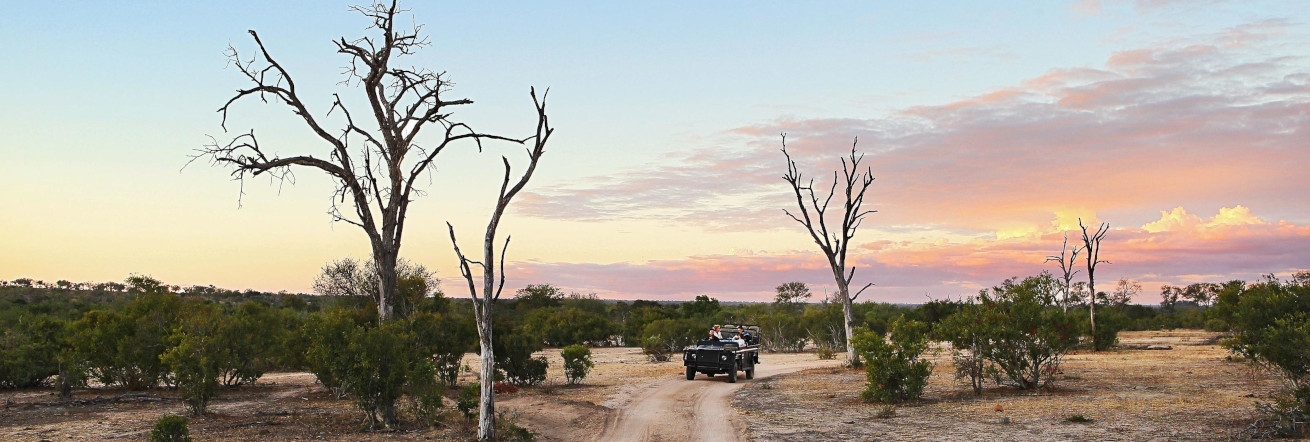
If you are looking for spectacular landscapes and fiery sunsets then visiting during the months of November to March is best as the stormy skies make for some dramatic sunrises and sunsets.
Kwazulu-Natal
KwaZulu-Natal is a province situated on the south-eastern coastline of South Africa. It is a region best known for its lengthy stretch of beaches, vast fields of sugar cane and diverse, yet complex topography. Generally, the climate in this region is varied with the coast experiencing subtropical temperatures that get progressively colder towards the inland areas. The wet summer season is the best time to visit the beaches of KwaZulu-Natal as temperatures are high, the vegetation is green and water-based activities are in abundance.
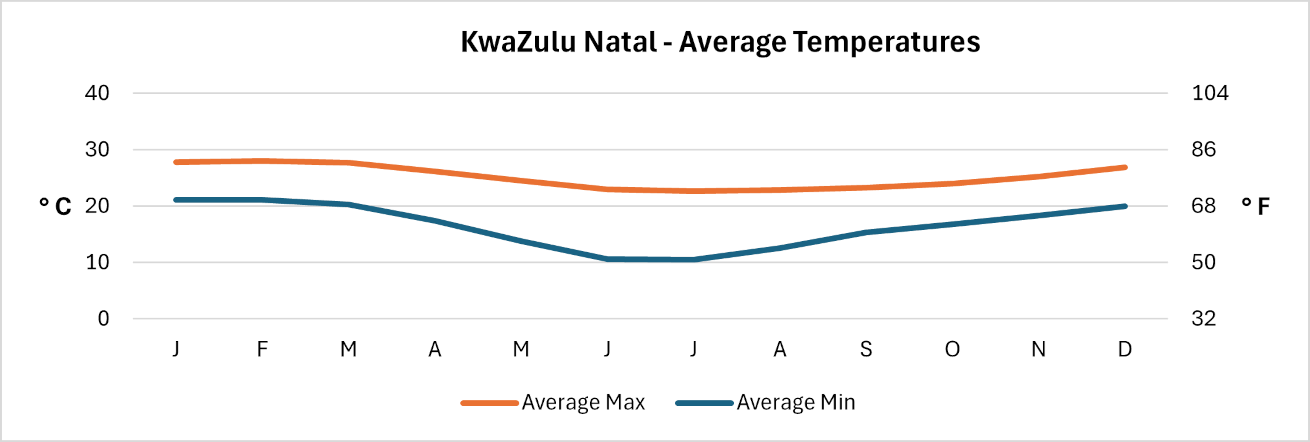
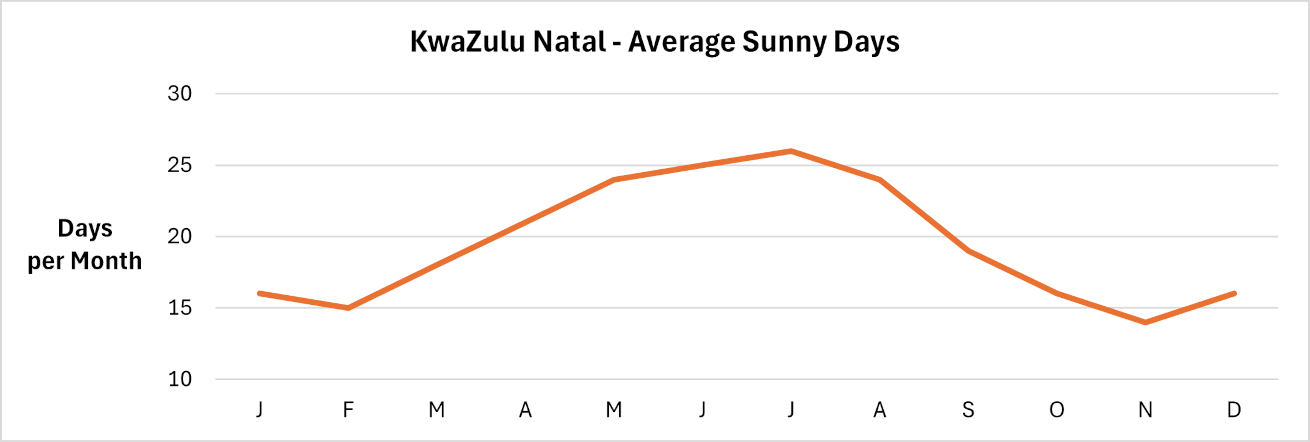
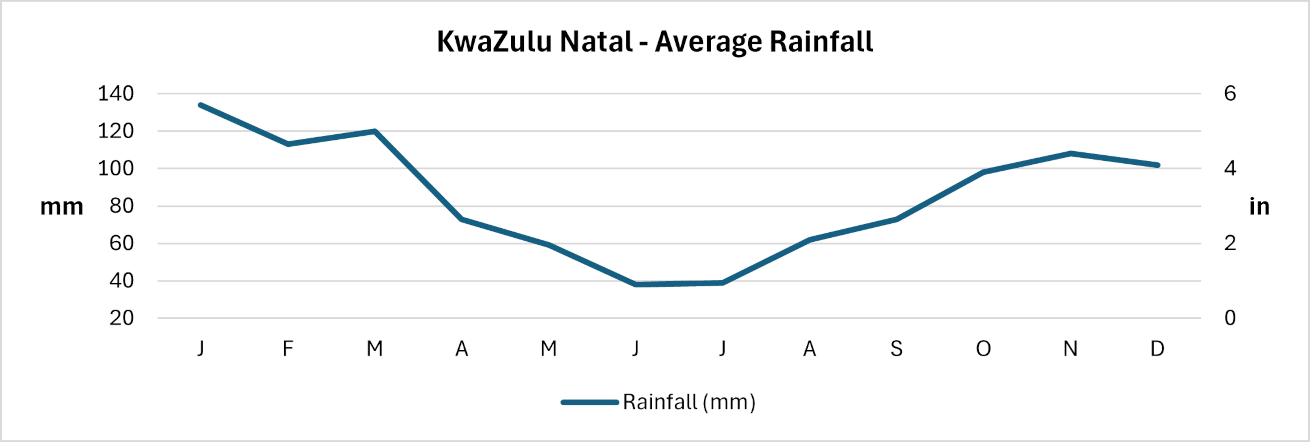
During the midst of summer, average day-time temperatures range between 29 – 30°C (84 – 86°F) with the presence of afternoon thunderstorms often offering a cool relief to families who flock to the east coast for their annual festive vacation. The drier winter months on the KwaZulu-Natal coastline are not as busy, but are perfect for swimming and surfing, as the warm Agulhas current ensures that the waters in this region stay swimmable for most months of the year.
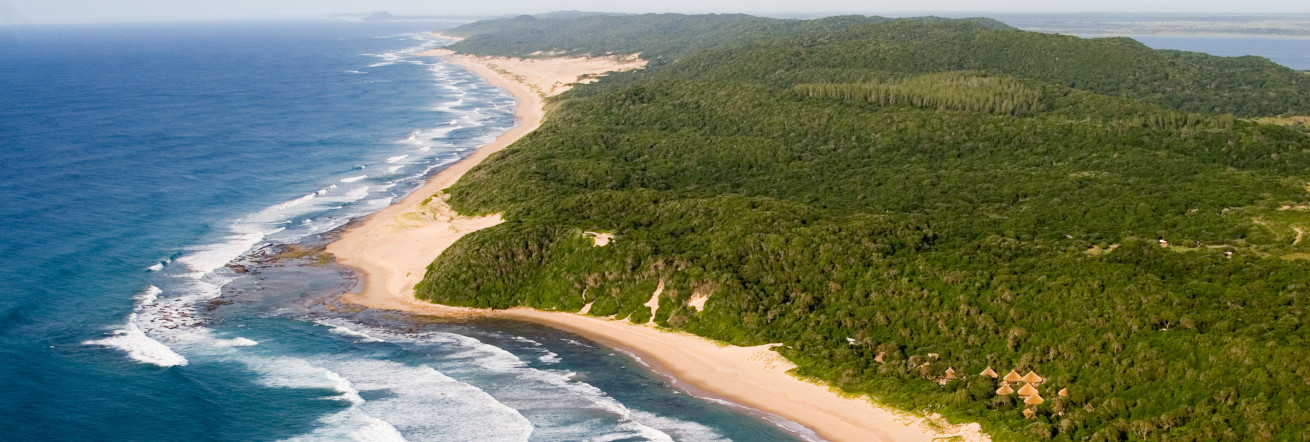
Although very little rain is expected, the average daytime temperatures during these drier months range between 24 – 26°C (75 – 78°F), making it a beautiful and sunny destination to visit year-round. Every year, from June to July, a natural phenomenon known as the Sardine Run takes place along this coastline. Here shoals of sardines come into proximity of the shore, attracting sharks, gannets, dolphins and of course people, all wanting to capitalize on this bounty.
The Garden Route
The Garden Route is a pristine area on the South African coast that stretches from Witsand in the Western Cape to the border of Tsitsikamma and Storms River in the Eastern Cape. Summer is an excellent time to visit this region as days are long (13.5-14 hours) and temperatures range between 28 – 29°C (82- 84°F). With no specific rainy season and pleasant temperatures all year, The Garden Route is the perfect destination no matter which month you travel in.
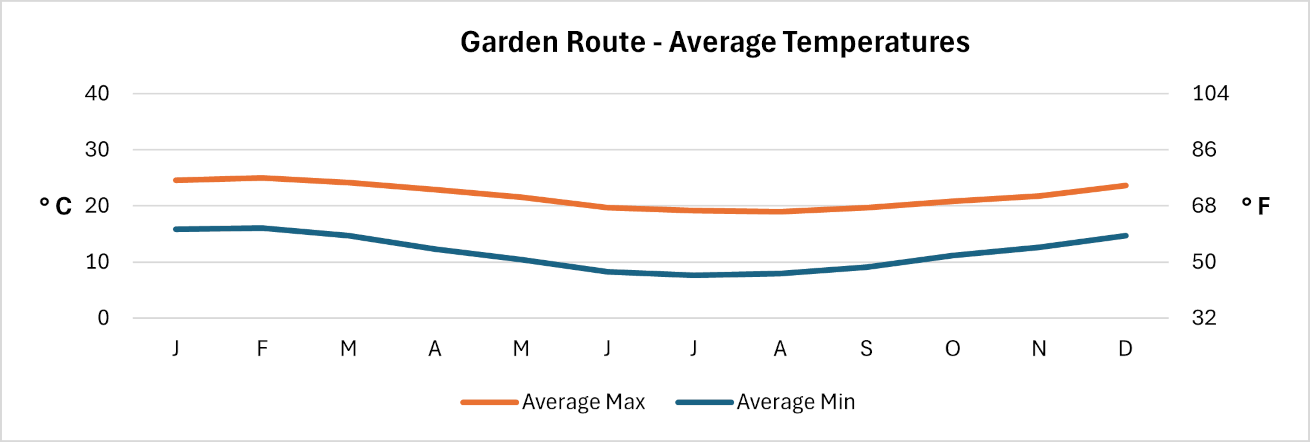
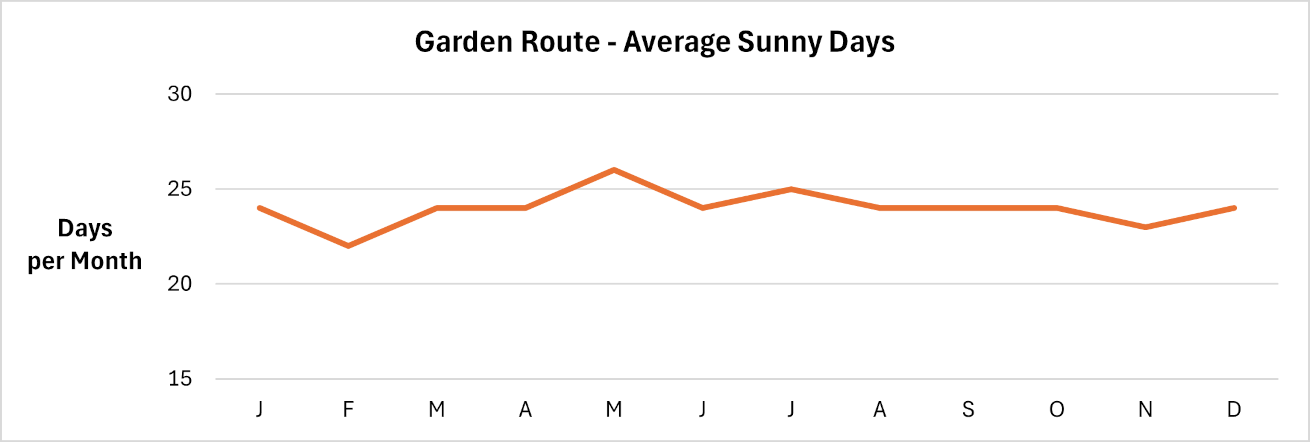
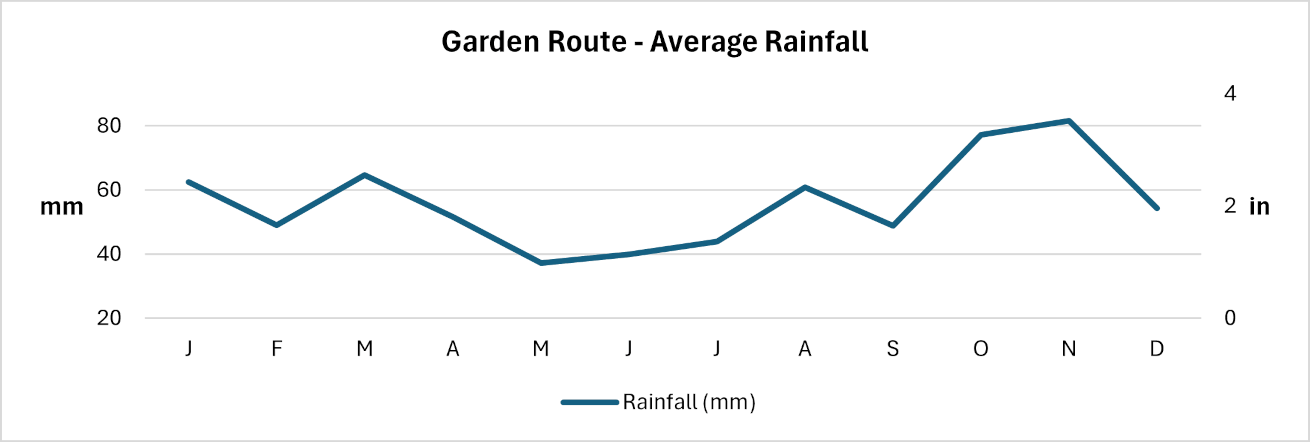
There are a variety of activities to do on this 300km route, including Malaria-free Big 5 safaris, forests walks, whale and dolphin watching at a number of stunning beaches and lagoons, as well as golf courses and the Tsitsikamma swing bridge. During March, in the Klein Karoo town of Oudtshoorn, the Klein Karoo National Arts Festival takes place. This is a major event that attracts both locals and travellers alike as it presents a combination of good food, art and music. Winter on the Garden route is also an option that sees average daytime temperatures range between 22 – 25°C (71 – 77°F). These months are great for shark-cage diving at Gaansbaai (2.5 hrs from Cape Town) as the underwater visibility is at its best, while the famous Knysna Oyster Festival takes place annually in July, promising everything from fun fairs, sporting events, wine tasting and of course oyster shucking competitions. If you are looking for a surfing destination, then visiting the Garden Route from April to August is best as the winter storms out in the ocean bring in some big swells. Whale watching is also possible along the Garden Route from July to October, the whales tend to stay close to shore for calving and mating so chances are good that you will spot some whales during these months.
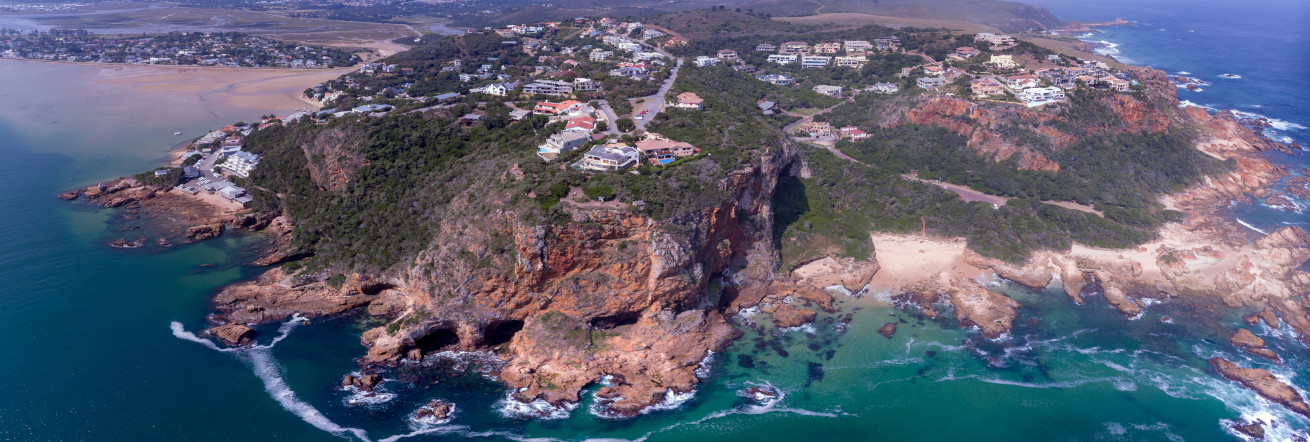
The Drakensberg
The Drakensberg is the name of the eastern section of South Africa’s Great Escarpment, which forms the border between KwaZulu-Natal and the kingdom of Lesotho. With a range of nature-based activities, wide-open spaces, and fantastic birdlife, the Drakensberg Mountains are the best place for outdoor enthusiasts.
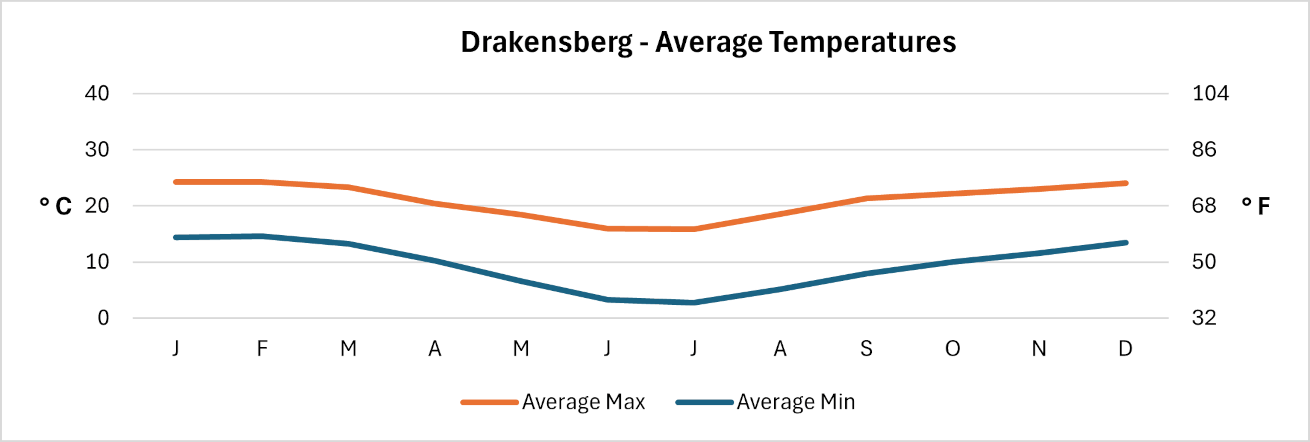
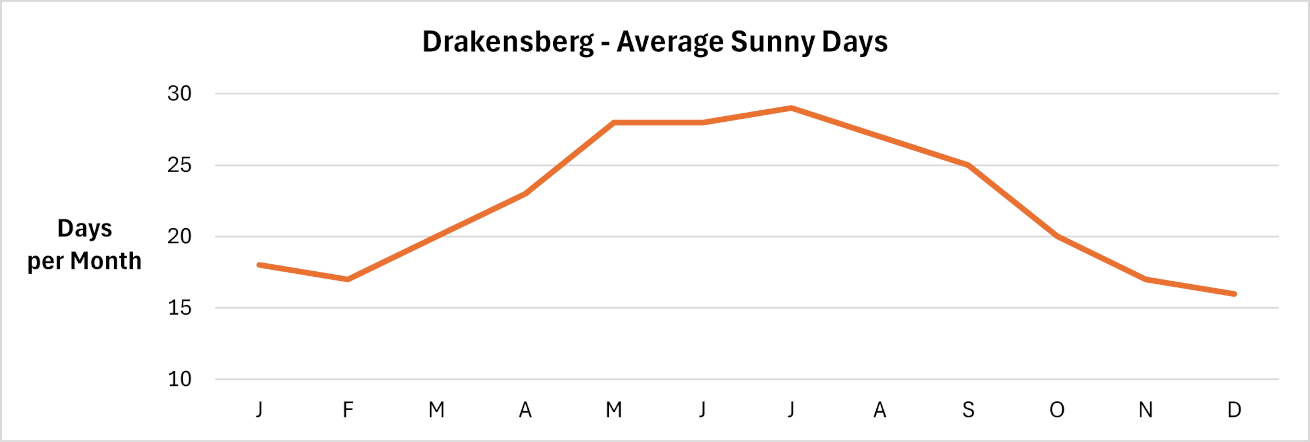
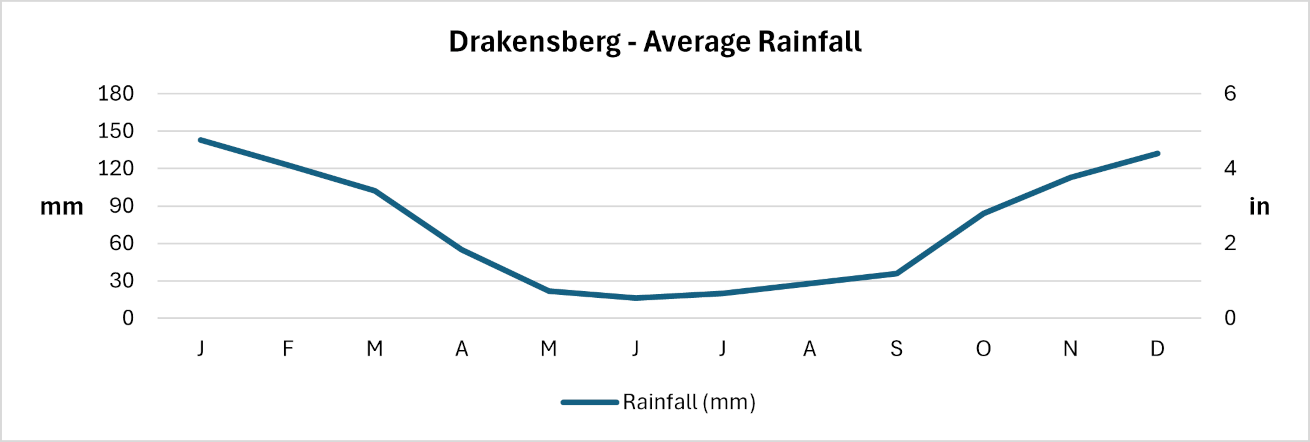
The best time to visit depends on what activities you wish to do and the sights you hope to see. Springtime in the Drakensberg amphitheatre is filled with contrasting colours of flowers and day-time temperatures that sit between 12 - 20°C (53 – 68°F), making hiking this region a pleasurable and memorable experience. The wet summer season in the Drakensberg, sees hot and humid days, with average temperatures sitting in the high 20 °C (70°F), with the occasional late afternoon thundershower cooling the landscape down. The plant and birdlife tend to thrive during this time of year as flocks of Drakensberg Rockjumpers, Drakensberg Siskins, Cape Parrots and the rare Blue Swallows can be seen throughout. The months of autumn (April-May) are optimal for higher and longer hikes, as conditions are comfortable, and views are extraordinary. Winter in the Drakensberg Mountains means extreme weather conditions with temperatures that range between 9°C (48°F) during the day, to -3°C (26°F) overnight. Snow is likely to fall on some of the higher peaks during these months, however, the cool dry air and lack of rain will unlikely hinder any outdoor activities as it is the driest season of the year.

Regardless of the season in which you travel to South Africa, there will always be dozens of attractions in their prime. We’ll help you to plan an itinerary that takes in the best that the areas and seasons have!
Your Safari Planning starts here.
![]() Learn from our experience.
Learn from our experience.
![]() Expert advice on safaris & logistics.
Expert advice on safaris & logistics.
![]() Supportive ‘one on one’ service.
Supportive ‘one on one’ service.




